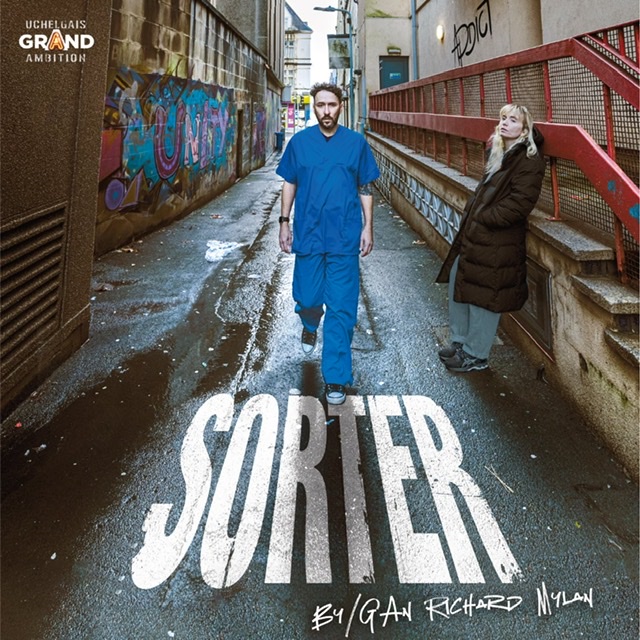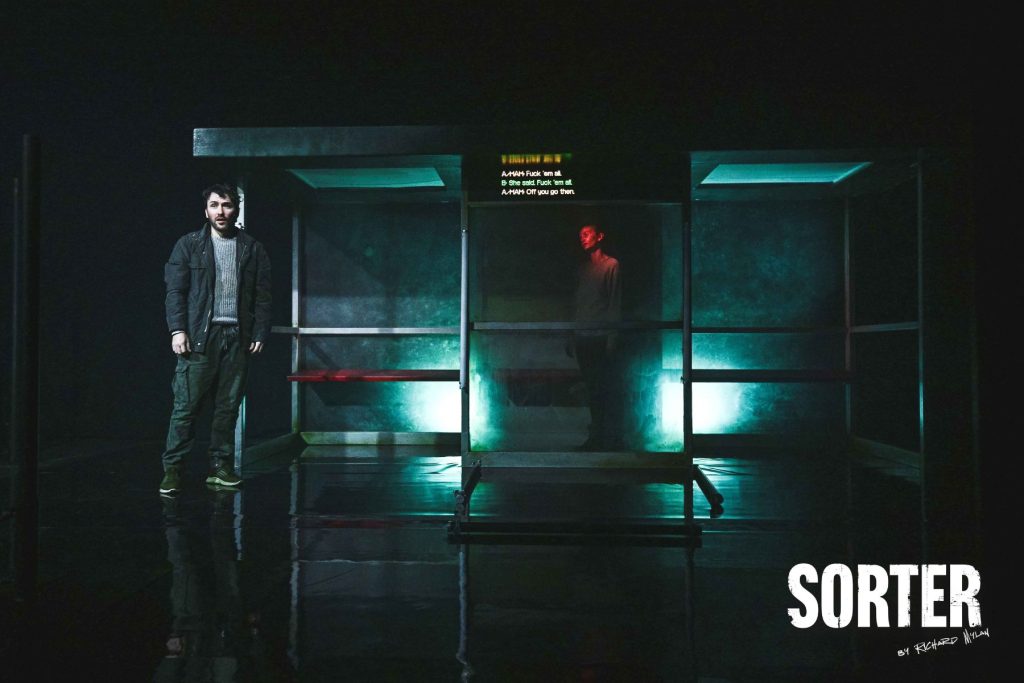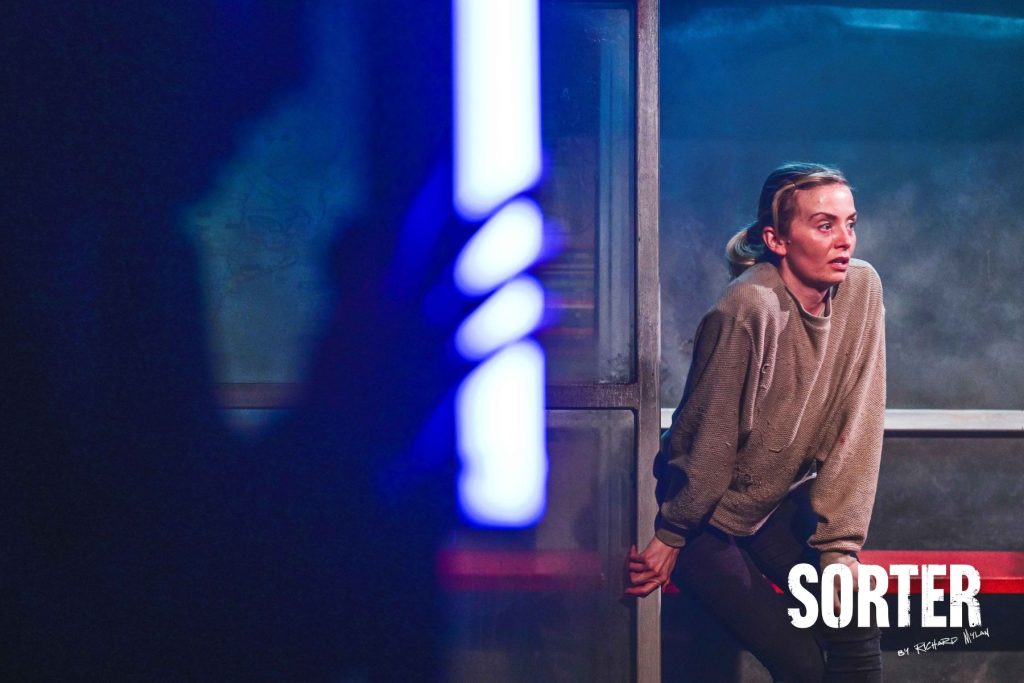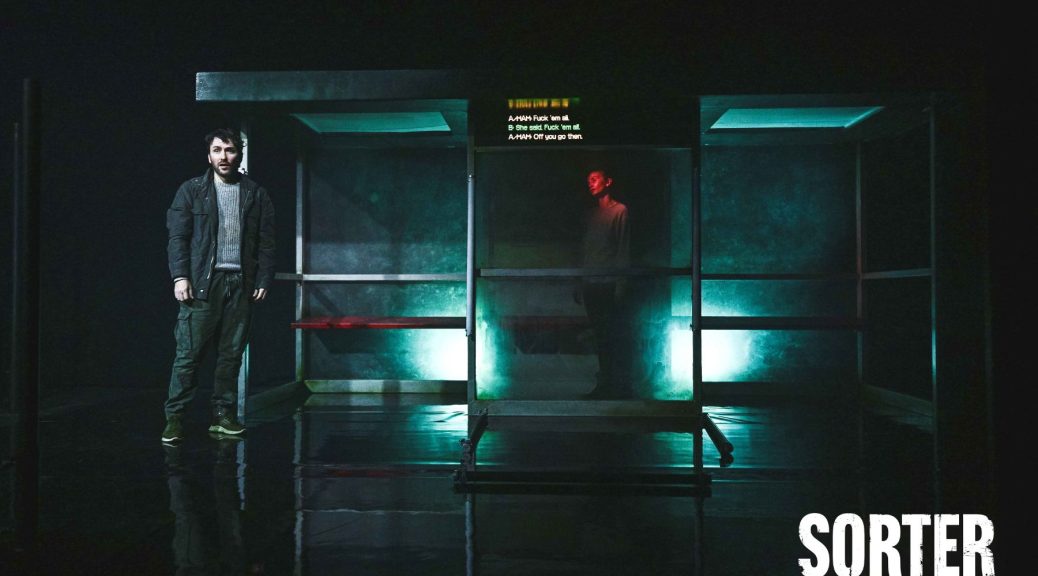
 (5 / 5)
(5 / 5)
This show had a highly regarded reputation and an amazing preconception, so I had high expectations going into it.

Let me set the scene. When you enter the sold-out performance space, it’s with excitement and anticipation in the air. There are smells, and alternative pop music being played. A bus stop is in the middle of the stage, with about nine black poles dotted around it, and an electronic screen in the middle of the bus stop displaying places in Swansea and times. The screen showed drug terms and definitions before the play started, such as “chasing,” “methadone,” “tick,” “weighing and bagging,” “chasing the dragon,” and “sorter” (which I hadn’t realized until now was a drug term; it means using a drug as payment for work instead of money). This was cleverly used for setting the scene, and these were the terms the performers used in the piece. If you remembered what some of these terms meant, you could understand it when they used them in the piece. The electronic screen was also used to show captions during the performance, as Friday night’s show was one of the captioned performances.
There was an orange light from the left corner, a purple light from the right, and a blue and a green from respective sides of the bus stop before the performance started. The performers used colour so cleverly during the piece, and they had multiple magnetic lights that they would take at different points and put them on the poles to set the scene for what they were describing, as the set was minimalistic. For example, for one scene when Richard Mylan is describing “memory 3,” with a guy named Ernie and a gas fire that he, when he was younger, was getting warmth from, they took a light to that pole, and the light was a warm orangey glow like a fire, to help emphasise the scene for the audience. There were also lights behind the bus stop. An excellent example of the riveting nature of the piece is the use of seagull noises in the background, such as when Sophie Melville’s character gets a view of Mumbles. At another point, there was an electric spark and a heartbeat that kept getting faster. There are many ways in which they use lighting and sound cleverly to envelop the audience into the story.

It is very fast paced, as Richard Mylan will tell his story, and then Sophie Melville will continue with hers, and it goes back and forth throughout, so you have to try and remember what happened in each story. “Sorter” was about a nurse who got addicted to morphine, and he was a high-functioning drug addict, which is based on Richard Mylan’s (writer and actor) life. Sophie Melville played a character who was addicted to drugs, and her boyfriend was also her drug dealer. “Sorter” was an astonishing and impressive piece. It was immersive, with moments of laughter amidst the darkness, and you really felt sympathy for the characters.

It made you think retrospectively about how harshly you judge homeless people or people addicted to drugs, when many factors go into becoming addicted to something. As Sophie Melville’s character says in the piece, “they are almost impossible to get off” [paraphrased], and a lot of factors go into becoming homeless. Who are we to judge these people when they don’t get the help they need? It was eye-opening and shocking but a must-see. You had to see it in the Grand Arts Wing because you had to be in thrust and a small stage to feel close to the characters, feel sympathy for them, and understand them. Also, there were lots of references to places in Swansea, one being when Jess, Sophie Melville’s character, climbs up on the ladder behind the bus stop and talks about how “people like her don’t deserve to have such a breath-taking view of the Mumbles and Swansea, living in Mayhill” [paraphrased].
Richard Mylan and Sophie Melville are exceptional and tell the story so well that you wish you hadn’t missed it.


Good review and very informative, thank you.
Important to identify the triggers to their addiction, in both cases one could assume adverse childhood experiences with the experiences being more severe in Sophie’s case. In Richard’s case the trigger was seeing a child in the Emergency Dept of the hospital where he worked who had been assaulted. The trigger was Richard being sexually abused when he was a child, resulting in him assaulting (wrongly) the child’s father in the hospital. The slide into oromorph addiction progressed rapidly resulting in a term of imprisonment and street heroin on release.